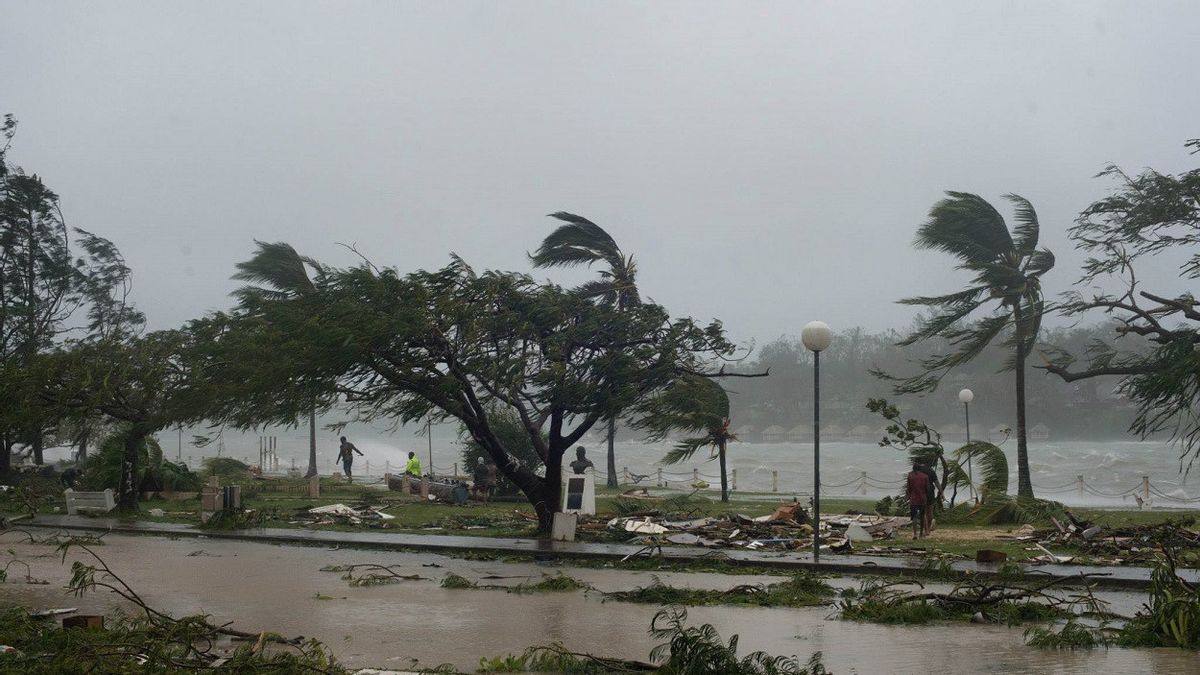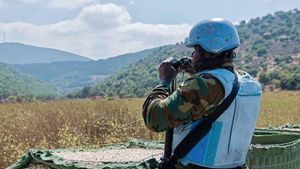JAKARTA - Hundreds of people, including Rohingya Muslims, are feared to have died after a typhoon hit Myanmar at the end of last week, residents and aid groups said on Tuesday, with rescue efforts hampered by infrastructure damage.
Myanmar's poor Rakhine state was hit by Typhoon Mocha, where winds of up to 210 km/h (130 mph) tore up the roofs of houses and carried storm waves that flooded the state capital Sittwe.
The region has a large Muslim population of Rohingya, a minority that is persecuted and not recognized by the Myanmar government. Meanwhile, more than one million people live in large camps in neighboring Bangladesh after fleeing military crackdown in recent years.
Rakhine residents said at least 100 people had been killed and more were missing and feared to be killed, adding that aid had not arrived. Meanwhile, Bangladesh experienced its worst power outages in more than seven months.
A resident in the area, who declined to be named for fear of his safety, said more than 100 Rohingyas were killed, based on an assessment from several villages he visited after the incident.
Two other residents contacted by Reuters also said a large number of people had been killed, as were diplomatic sources briefed on the situation, who did not provide details.
News portal Myanmar Now reported hundreds of people feared dead, while aid groups said there was a "significant number of deaths". Meanwhile, Myanmar's state media said three people were killed.
A pro-democracy National Unity Government spokesman told Reuters: "We received confirmation of the deaths of some 400 Rohingya people, especially around the Sittwe region," as reported May 17.
The storm is one of the worst since Typhoon Nargis hit parts of southern Myanmar and killed nearly 140,000 people in 2008.
Separately, a UN official said that 5.4 million people were expected to be on the storm track, and most of them were considered vulnerable.
"This is truly a nightmare scenario for hurricanes to hit areas that already desperately need help," said Ramanathan Balakrishnan of the UN Humanitarian Affairs Coordination Office, adding home, water, sanitation and aid items were the initial priority.
Meanwhile, damage caused by storms to communication and road infrastructure, as well as restrictions imposed by the Myanmar military government made it difficult to obtain information and send aid to affected areas, several non-governmental organizations said.
"It's hard to get accurate or up-to-date information, which also makes the response to this crisis even more difficult," said Manny Maung of Human Rights Watch.
Separately, non-governmental aid organization Partners said on Twitter: "We are stepping up our response efforts to provide important aid supplies such as rice and tarpaulins to the Rohingya community affected by Topan Mocha as best we can."
VOIR éGALEMENT:
Myanmar's state media on Tuesday said senior chief junta General Min Aung Hlaing had visited Sittwe to assess the damage, donate money and give instructions on countermeasures.
It is known, before the storm occurred on Sunday, about 400,000 people were evacuated in Myanmar and Bangladesh.
The United Nations humanitarian office (OCHA) said about 6 million people in the region had needed humanitarian assistance before the storm broke out, including 1.2 million people displaced by ethnic conflicts.
The English, Chinese, Japanese, Arabic, and French versions are automatically generated by the AI. So there may still be inaccuracies in translating, please always see Indonesian as our main language. (system supported by DigitalSiber.id)


















